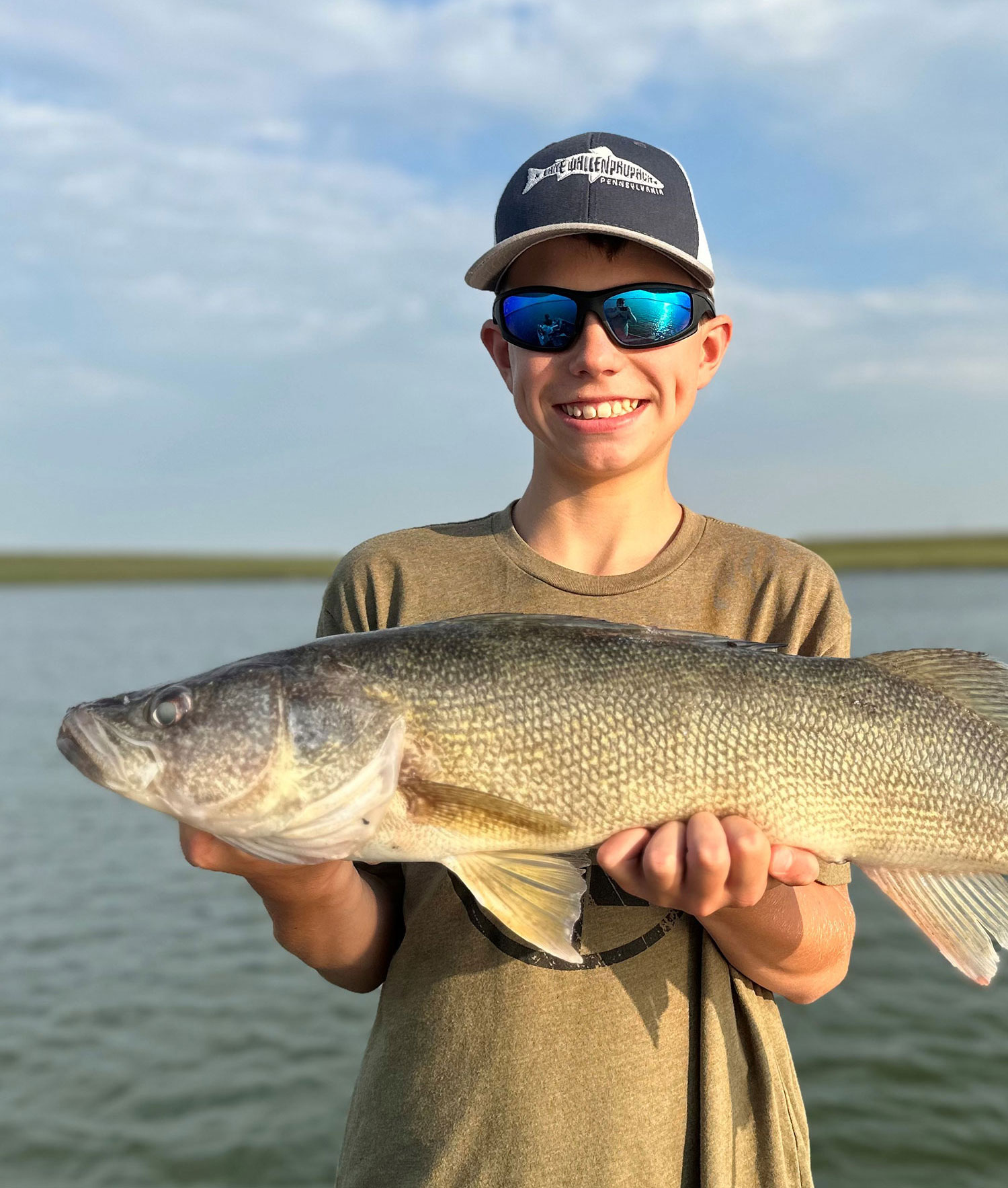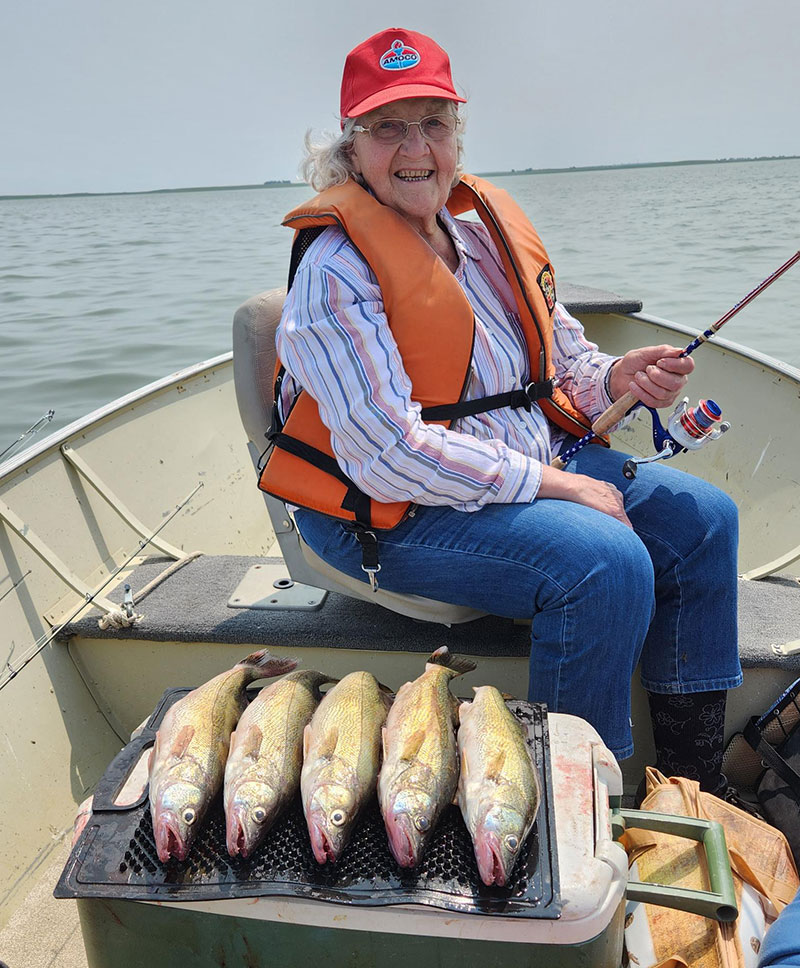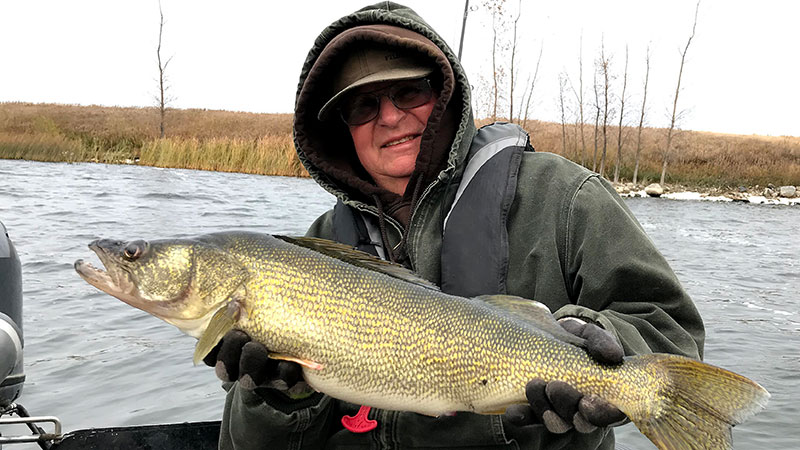Generational Change
By Greg Power

Parker Rash
The accompanying photos displaying happy anglers last summer on a number of different North Dakota prairie lakes is a positive outcome that is relatable for many.
With 75-plus of these prairie lakes created in the past 20 or so years, coupled with the state’s traditional waters — Sakakawea, Oahe and Devils Lake — fishing in recent years has likely never been better.
Smiles such as these have become commonplace.
If you closely observe the photos, you will note they are all boat anglers.
Likewise, similar photos of happy anglers with walleye, northern pike or yellow perch could be taken from various lakes while ice fishing this past winter.
Boat and ice fishing have become highly popular in the past 50-plus years.
These two fishing styles have been the recipient of the myriad of changes in technology as well as dramatic increases in creature comforts over time.
In contrast, the fundamentals that make up the other main style of angling, shore-fishing, has changed very little.
A deeper dive into how North Dakota anglers’ fishing styles have evolved reveal a stark contrast in participation trends.
Let’s take a look back at what has changed and what it may mean for the future of fishing.
Times are a changing and if you’re, say, a lifelong North Dakota angler in your 60s or 70s, you’ve witnessed this firsthand when it comes to boat and ice fishing.
All the advancements in more and better “stuff” — from 20-plus-foot fiberglass boats to 450 horsepower outboards, to fish houses with all the luxuries, to track ATVs, to incredible electronics, to the list going on and on — and society’s affluence, which allows many of us to purchase this “stuff,” have cumulatively given the boat and ice angler a tremendous advantage compared to a half-century ago.

Madden Skunberg
Thankfully to date, fisheries biologists and managers have generally been able to keep up with the higher fish harvest rates of the better equipped anglers with their own use of advancements and a better understanding of the aquatic world.
However, many have questioned how it will end?
Advancements in the fishing industry have been good for those involved in fishing as well as North Dakota’s economy.
Although reliable statistics are not available for the early 1970s, it’s likely safe to say that two-thirds of all fishing effort occurred on our shorelines.
Today, it’s less than 10%.
What is clear today is this entryway to a lifetime of “hooked on fishing” that shore-fishing once served has become a lot weaker.
Nowadays, most new young anglers are likely introduced to fishing via a boat or an ice fishing excursion.
That’s simply the sign of the times as “fish catchability,” affluence and personal decisions have driven these changes to fishing styles.
Looking into the future, what remains unclear is if we can continue to recruit substantial numbers of anglers to fishing who only know boat (and ice) fishing ways.



